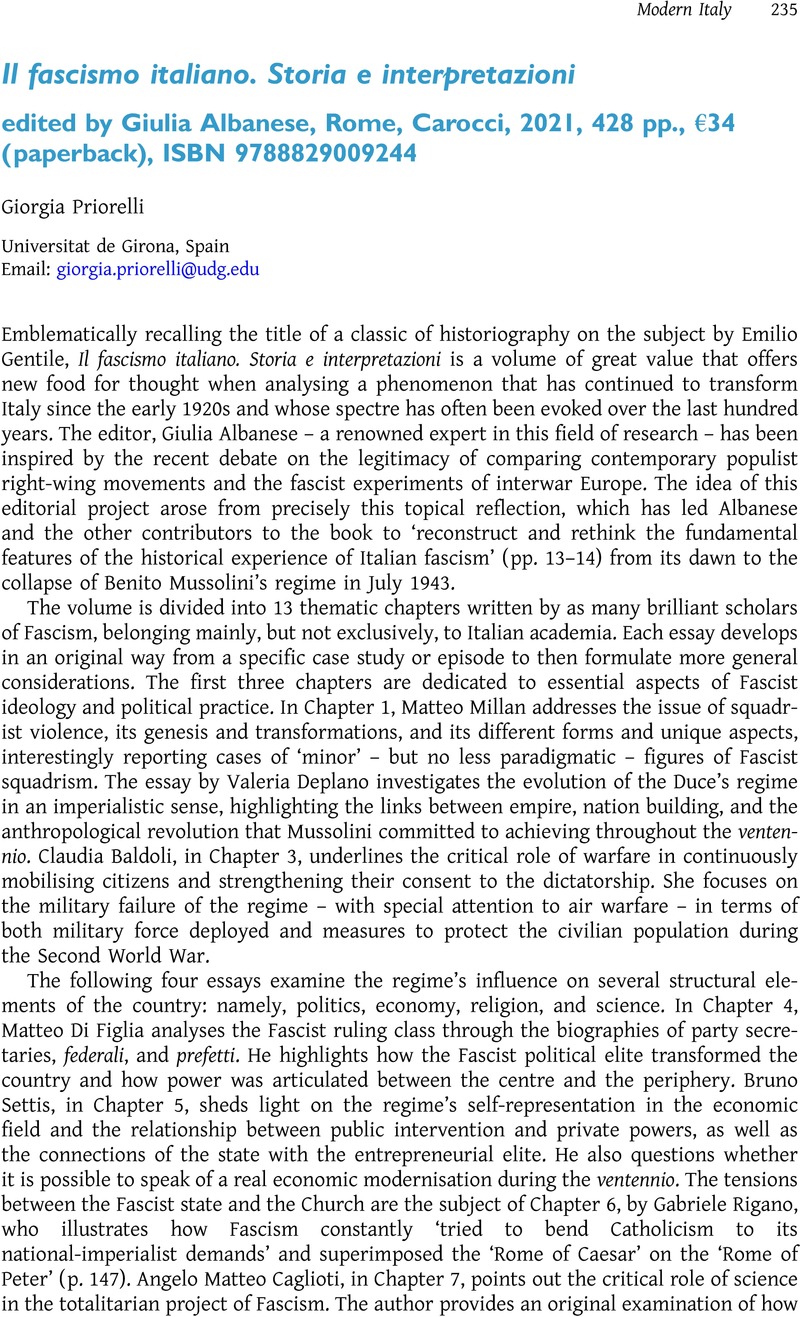No CrossRef data available.
Article contents
Il fascismo italiano. Storia e interpretazioni edited by Giulia Albanese, Rome, Carocci, 2021, 428 pp., €34 (paperback), ISBN 9788829009244
Review products
Il fascismo italiano. Storia e interpretazioni edited by Giulia Albanese, Rome, Carocci, 2021, 428 pp., €34 (paperback), ISBN 9788829009244
Published online by Cambridge University Press: 02 August 2023
Abstract
An abstract is not available for this content so a preview has been provided. Please use the Get access link above for information on how to access this content.

- Type
- Book Review
- Information
- Modern Italy , Volume 29 , Special Issue 2: Gendering work in 20th century Italy , May 2024 , pp. 235 - 236
- Copyright
- Copyright © The Author(s), 2023. Published by Cambridge University Press on behalf of Association for the Study of Modern Italy


